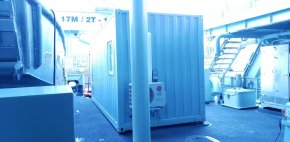There are some oceanic subs coming on line.
Short fin Barracuda
S-80+
KSS-III
Type 612 extended
The last three are approximately the size of a Collins class, or similar size to the original SSN USS Nautilus, the first sub to transit the artic. Barracuda is obviously significantly larger. Barracuda is approximately twice the size of the French SSN Rubis class. All would seem to provide more capability than the current submarines.
I am unclear on Canada's ice needs. Its current subs have no particularly special ice penetration capabilities in its hull size or strength. Its previous submarines have no particular ice penetration capabilities. Russian, Norwegian, Dutch, Sweden, all operate diesel submarines in cold climate waters. AIP submarines can remain under water for the entire length of their patrol, and would be able to cover the northwest passage distance under water, easily. I do not see the reasons why they would have to, the obvious thing would be to loiter around the passage entrances like any choke point.
Almost any submarine would have hull strength to break through ice, as they have hulls of greater strength than any ice breaker, and lift the ice up to break it rather than ramming over/through it. Sail strength would be the only concern, and easily addressed. As always, trying to surface through 5m thick of refrozen multi year ice is not recommended for any submarine, including the largest nuclear ones.
I would think Canada doesn't need 25+kt transit speed in the Northwest passage and therefore a nuclear submarine would seem to be a very big expense with no clear mission. As I point out in the RAN thread, nuclear submarines from the UK or US have significant crewing requirements, two to three or more times that of the submarine Canada currently operates. At its current size, Canada would struggle to man a single western SSN with its entire active submariner force. Building, operating and disposal costs a far, far, far higher than a conventional. Canada has already one failed SSN program.
China and Russia have limited SSN building capability, and even then, transits take time, and sap operational availability. It is the proliferation of other conventional subs is really the issue. The west currently operates around 80 nuclear submarines. Russian and China combined have about 25 nuclear submarines.


